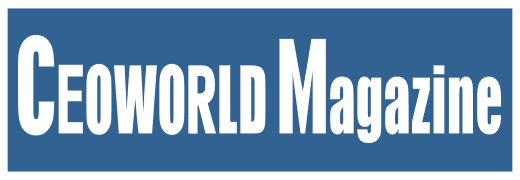



Feature Story
More feature stories by year:
2024
2023
2022
2021
2020
2019
2018
2017
2016
2015
2014
2013
2012
2011
2010
2009
2008
2007
2006
2005
2004
2003
2002
2001
2000
1999
1998
 Return to: 2019 Feature Stories
Return to: 2019 Feature Stories
CLIENT: VISURE SOLUTIONS
Oct. 3, 2019: CEOWORLD Magazine
Industries such as automotive and medical devices are experiencing a unique transformation in adopting new technologies that are not yet clearly regulated. For example, the software in car brakes is heavily regulated, but the AI software that drives the entire car isn’t. Moreover, many IT organizations have taken advantage of adopting more agile methodologies, while maintaining their classic safety-related developments.
All of this has given birth to a new set of needs for Application Lifecycle Management software (ALM) offerings to provide more integrated solutions, adaptable to IT teams as well as safety-critical and safety-business related teams. These next gen ALM tools will provide integrated frameworks adaptable to hybrid processes, instead of silos of information.
Until now, companies have had to use different requirements management products from various vendors because current ALM tools aren’t equipped to manage compliance needs for software teams while supporting other processes for hardware, electrical and mechanical teams. This has caused delays and slow turn-around times as teams work isolated, communication flow is scarce, and responsibilities unclear.
Many organizations that have been successful developing components in the past now face the challenge of having to develop multiple components and create bigger, more complex systems. This requires new systems engineering practices that were not standardized across the organization in the past, which, at the same time, requires a new generation of tools to support them.
Requirements management has to be a critical component of present and future ALM platforms to enable organizations to enforce and secure the traceability of any software product or any system. After all, requirements management is the first step that any new systems or new products have to go through in many industries. When requirements are not properly managed, poor change management leads to mistakes, failures, missed deadlines and missed functionality. An example of that is the Boeing 737 MAX crashes earlier this year due to missing requirements on how the system could reset itself each time a pilot responded and failure assessing the impact of the software system.
While technologies have evolved, and user expectations have changed – particularly with more applications accessed from different platforms – there has been a growing need for additional capabilities and tools used for different parts of the lifecycle to be able to easily and seamlessly share information between stakeholders.
The future of requirements management is a comprehensive and all-in-one integrated ALM platform that supports several lifecycle management activities including:
Another trend in ALM adoption in the past decade is organizations have been transitioning from a product to a service approach. This has prompted ALM companies to expand the scope of their offering to integrate the product development as part of a wider offering, which includes data centers, telemetry and automated billing – all traditionally disconnected areas that are now bundled together. The requirements management industry needs to be able to deal with the complexity of representing all this information in a relevant way to each one of the stakeholders, whether it’s a marketing team, a software developer or a regulatory authority. This means providing very simple and easy-to-use interfaces that any user can relate to, but at the same time, is totally integrated with the rest of the areas in the organization.
Looking into the very near future, requirements management tools will be an important part of an integrated environment that will bring together different disciplines such as agile and useful model-based systems engineering. This will bring flexibility to organizations, and also provide powerful tools to automate traceability throughout the lifecycle (example with Requirement Traceability Matrix). Meanwhile, AI will bring data insights on potential conflicts in conception and design, as well as propose ways to complete specifications.
The integration of these new technologies and disciplines is expected to result in a new level of demand for powerful ALM tools that better facilitate shorter time-to-market and development costs, compliance with standards and regulations in safety-critical markets, and consistent high product quality.
While some organizations are beginning to adopt these new integrated ALM tools in order to innovate systematically and stay competitive, others are being pushed aside by simply not being able to adapt quickly enough to the new technologies arising.
In order to accelerate and scale innovation – especially in the embedded systems and system engineering industries – requirements management must continue to be a priority for product development teams. The wave of the future is a single Requirements ALM platform that is capable of supporting different development lifecycle processes, and factoring all aspects of systems engineering development, including product software, embedded software, electrical, mechanical and hardware requirements, and enterprise IT development.
We will see more innovative and disruptive Requirements ALM technology in key functions, system performance, and solution economics for lifecycle management, enabling companies to better define and validate business needs, reduce development costs, comply with market standards, and deliver more high-quality products on time.
Return to: 2019 Feature Stories